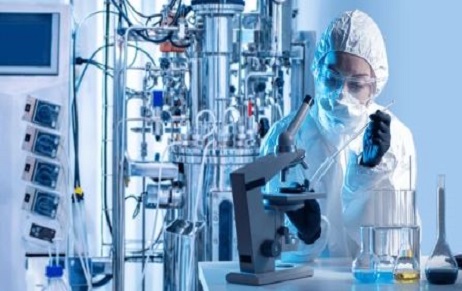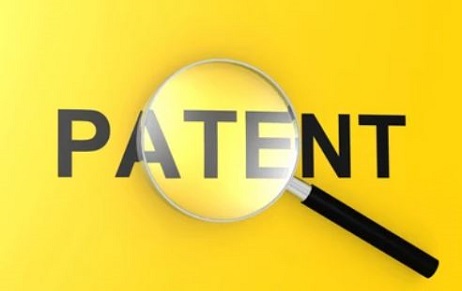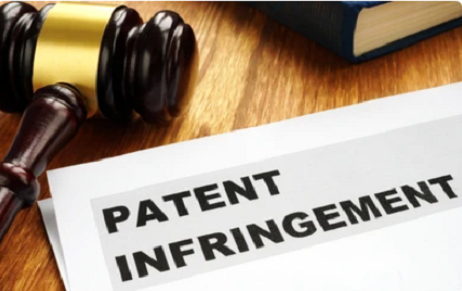INTRODUCTION In India the stages of the patent examination include the steps that must be…
Biotechnology Patent Landscape in India: Analyzing Emerging Legal Issues and Challenges
INTRODUCTION
Biotechnology Patent means the legal power given to the innovators to prevent third parties from producing, using or importing biotechnological inventions. A biotechnology patent, as described by Moore et al. (2019), comprises inventions pertaining to genetic material, living things, and procedures involving the manipulation of biological components.[1] It encompasses a wide range of technologies and extend across including recombinant DNA, genetic engineering, pharmaceutical formulations, and diagnostic methods.
All technological innovations or advancement are under the purview of patent laws. The field of biotechnology has grown to be an integral part of our economy thanks to new inventions and advancements in the fields of pharmaceutical research, energy and other areas where patent laws also apply. Due to the industry’s highly research-intensive nature the biotechnology industry necessitates huge financial investments in research and development and developing new products and creation and methods of operation.
PATENT FOR BIOTECHNOLOGY IN INDIA
The Patents Act, 1970 deals and governs the patent laws in India. Initially biotechnology patent laws are not included in the purview of Patents Act of 1970 but after the amendment of 2002, biotechnology patents came which includes biochemical, biotechnological processes, and microbiology.[2]
The term patent is given under Section 2(1)(m) of Patents Act, 1970 means a patent for any invention granted under this Act.
Section 2(1)(j) talks about “invention” means a new product or process involving an inventive step and capable of industrial application[3] and Section 2(1)(ja) talks about “inventive step” means a feature of an invention that involves technical advance as compared to the existing knowledge or having economic significance or both and that makes the invention not obvious to a person skilled in the art.[4]
So, according to these definition in order to get patent in India-
- An invention must be unique involve an inventive step.
- Must be capable of Industrial application.
- The innovation cannot be revealed to the general public before the application date even by the inventor itself.
Additionally, the patent should not fall within the categories specified under Chapter 2 (Non-Patentable inventions) of the Patents Act, 1970.
Section 3 and 4 of The Patents Acts, 1970 defines the inventions which are non-patentable in India. Some sub-sections of section 3 talks about the inventions that are not-patentable under biotechnology patent law in India are:
- Section 3(b) which talks about inventions which is primarily related to the commercial exploitation related to the serious prejudice to human, animal or plant life or health or to the environment.[5]
- Section 3(h) talks about the methods of agriculture and horticulture.
- Section 3(i) talks about the process of treatment, therapy and diagnosis.[6]
Section 4 talks about the invention under atomic energy falling within sub section (1) of section 20 of the Atomic Energy Act, 1962 as non-patentable.
India is the member country of TRIPS Agreement and joined this in 1995. Every member country abides by Article 27 of the TRIPS Agreement. Article 27(3) states that nations may exclude from patentability inventions pertaining to surgical, medicinal, and diagnostic procedures as well as plants and animals other than microorganisms.
The TRIPS Agreement leaves room for interpretation when it comes to microorganisms and their processes and functions. It fails to specify whether or not a product which is made by recognized microorganism qualifies for patenting protection. A line must\t be drawn by the nations to distinguish between the products of man-made and the products which are naturally occurred.[7]
EVOLUTION OF BIOTECHNOLOGY PATENT LAW
This case of US Supreme court Diamond v. Chakrabarty (1980) is the landmark case in the field of biotechnology patent law. The court ruled that the human invention of living organisms could be patented. The court acknowledged that the patent system might encourage innovation in the biotechnology industry and provide incentives for the development of new technologies. This decision broadened the scope of additional patentable subject matter by including genetically modified living organisms.[8]
In the case of Mayo Collaborative Services v. Prometheus Laboratories (2012), the patent eligibility of diagnostic techniques took place. The Supreme court is of the view that the linking of drug dosage and to natural biological response was found to be the law of nature and merely stating this link in a patent claim was not enough to qualify the invention for patent protection. This case highlighted the need for inventors to demonstrate significant game-changing developments or uses in diagnostic method patents.
In the case of Dimminaco A.G. v. Controller of Patents and Designs, Calcutta High court held that the manner of manufacturing a product that contains living organisms can be patented.
EMERGING ISSUES AND CHALLENGES OF BIOTECH PATENT
The recent development of CRISPR-Cas9 and other gene editing technologies has created new complexities and challenges in Biotech Patenting.[9] This technology has the ability to make accurate genetic modifications which raises concerns about the patentability and ownership of edited genes and organisms and the possibility of wide patent claims that could obstruct future advancements and research partnerships.

One more issue that pose challenge in the biotech industry is the issue of patent thicket that can have an impact on the innovation. Patent thickets means the overlapping and intricate patent landscape that can impede commercialization and invention.[10] Several patents covering various aspects of a technology might result in expensive transaction costs, ambiguous legal circumstances, and unclear rights surrounding freedom of operation.
Another challenge is the varying international perspective or viewpoint on biotechnology patent in harmonizing patent laws and addressing global concerns. The requirements for patentability and degree of protection for biotechnological inventions vary throughout jurisdictions.[11]
The issue of privacy raises a concern in the industry because to maximize their profits many competing industries often collect many data’s and incorporate in their products. For the industries, this presents a significant challenge as well, therefore they must strongly stand by it.[12]
At present, biotech inventions are not sufficiently protected by patent law. It is quite hard to put genetically altered inventions into words. In the case of biotechnology developments, it is feasible that a patent may be awarded to a patentee who doesn’t deserve it.
CONCLUSION
To better serve the interests of the general public, biotech research and development should be promoted in order to explore novel techniques and enhance biological systems. So, it is clear that India has to do more research in the realm of biotechnology. It is necessary to safeguard inventors’ interests. People who create items and operate in the biotechnology area need to have their inventions protected by patent law.
The biotech industry has played a vital role in the advancement of patent law. It poses a challenge as biotech patenting involves patenting of living organisms. Without violating the TRIPS Agreement, Indian patent laws effectively handle the question of patentability in this field. The analysis of the legal issues and challenges of biotech invention and patents highlights the nuanced environment in which biotechnology works. Gene editing and CRISPR patents, patent thickets, and global viewpoints on biotech patents are some of the new issues and challenges in biotech patenting.[13]
Author: Arya Bhatt, in case of any queries please contact/write back to us via email to chhavi@khuranaandkhurana.com or at IIPRD.
[1] Khan S, ‘Patent Law and Biotechnology: An Examination of the Legal and Ethical …’ (eurchembull, 2023) https://www.eurchembull.com/uploads/paper/43187882263b0c6e8ee63a7233ee5a32.pdf accessed 21 January 2024
[2] ‘Biotechnology Patent in India and Issues Related with Patentability of Biotechnology’ (Legal Service India – Law, Lawyers and Legal Resources) https://www.legalserviceindia.com/legal/article-12133-biotechnology-patent-in-india-and-issues-related-with-patentability-of-biotechnology.html accessed 21 January 2024
[3] IPflair (2024) What is patent and patentable invention?, IPFlair. Available at https://ipflair.com/blog/what-is-a-patent(Accessed: 07 February 2024).
[4] Ibid
[5] Section 3 (b) of The Patents Act, 1970
[6] Biotechnology Patent in India and Issues Related with Patentability of Biotechnology’ (Legal Service India – Law, Lawyers and Legal Resources) https://www.legalserviceindia.com/legal/article-12133-biotechnology-patent-in-india-and-issues-related-with-patentability-of-biotechnology.html accessed 21 January 2024
[7] Ibid
[8] Khan S, ‘Patent Law and Biotechnology: An Examination of the Legal and Ethical …’ (eurchembull, 2023) https://www.eurchembull.com/uploads/paper/43187882263b0c6e8ee63a7233ee5a32.pdfaccessed 21 January 2024
[9] Ibid
[10] Ibid
[11] Ibid
[12] Dev R, ‘Biotechnology Laws and Regulations in India’ (Rahul Dev – Patent Attorney | Tech Lawyer, 10 January 2022) https://patentbusinesslawyer.com/biotech-laws-regulations-india/accessed 21 January 2024
[13] Khan S, ‘Patent Law and Biotechnology: An Examination of the Legal and Ethical …’ (eurchembull, 2023) https://www.eurchembull.com/uploads/paper/43187882263b0c6e8ee63a7233ee5a32.pdfaccessed 21 January



